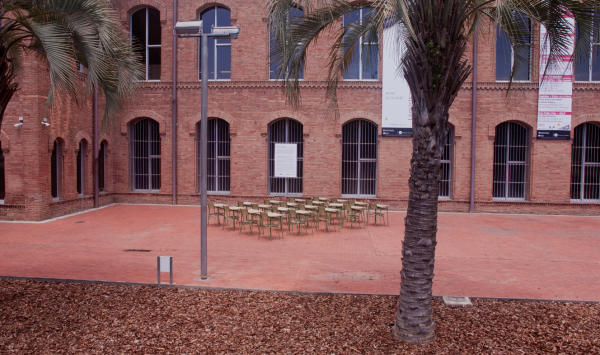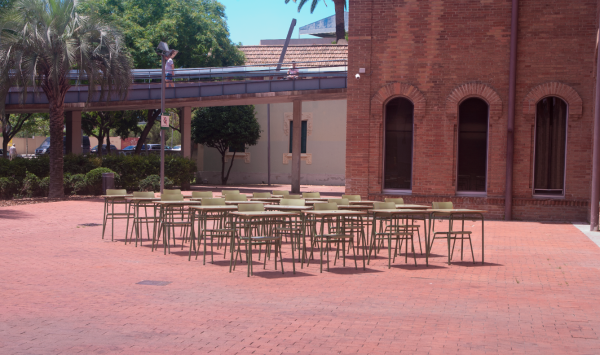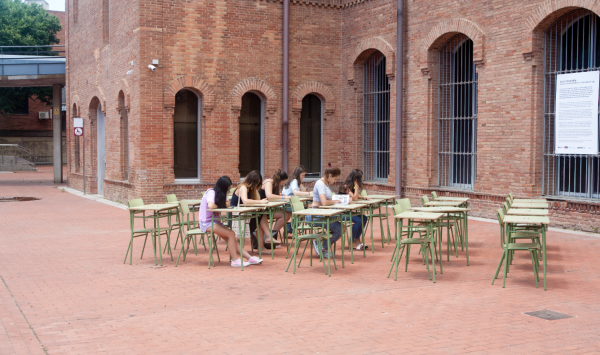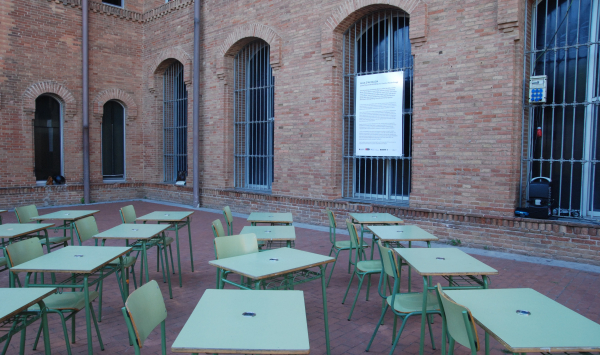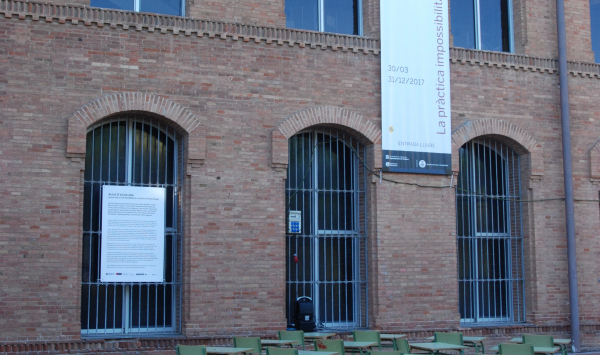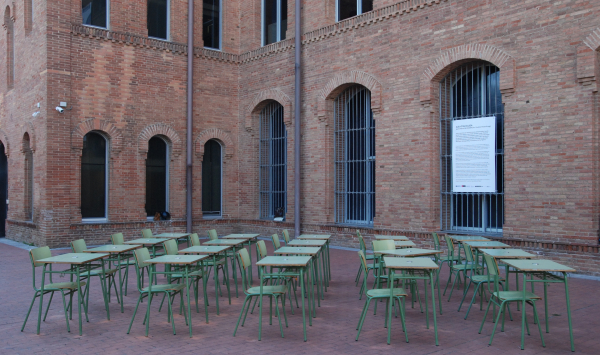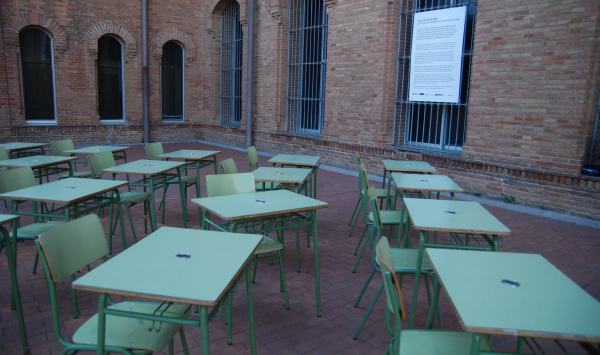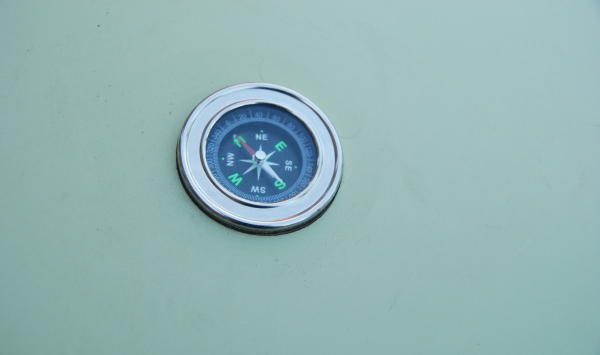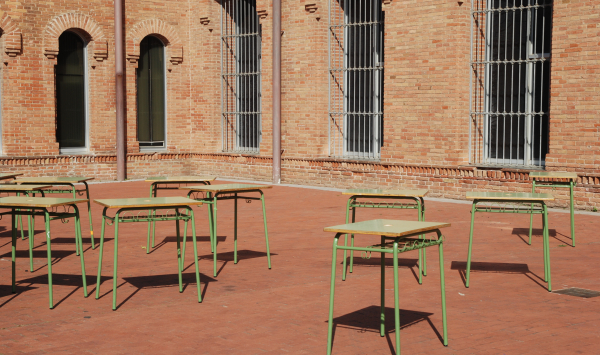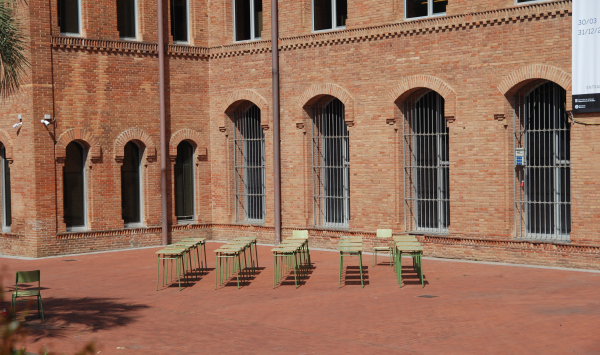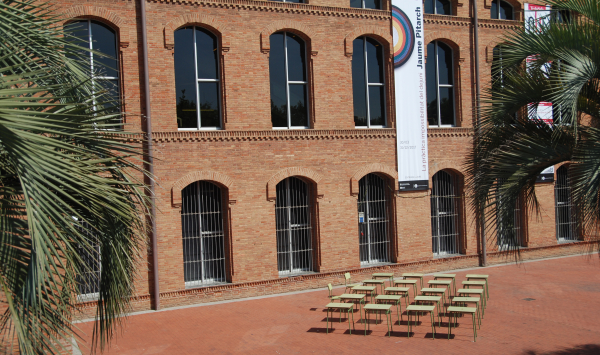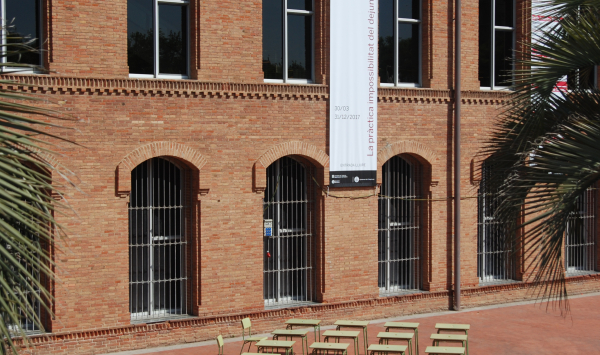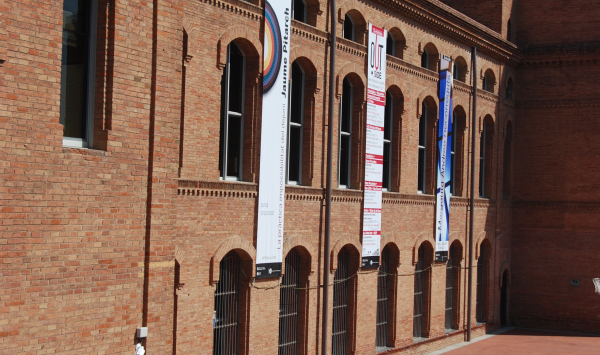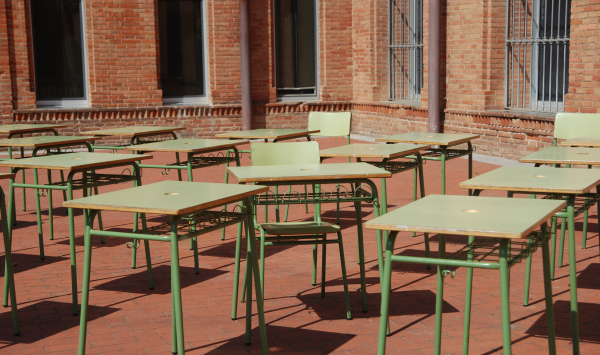- 14th EDITION 2022 / 2023
- 13th EDITION 2021 / 2022
- 12th EDITION 2020 / 2021
- 11th EDITION 2019 / 2020
- 10th EDITION 2018 / 2019
- 9th EDITION 2017 / 2018
- 8th EDITION 2016 / 2017
- 7th EDITION 2015 / 2016
- 6th EDITION 2014 / 2015
- 5th EDITION 2013 / 2014
- 4th EDITION 2012 / 2013
- 3rd EDITION 2011 / 2012
- 2nd EDITION 2010 / 2011
- 1st EDITION 2009 / 2010
Jaume Pitarch IN RESiDENCE at the School Moisès Broggi
Aula d'acollida [Reception Classroom]
[Reception Classroom]
Installation of chairs and desks intervened by the insertion of a compass.
The process of research, thought and creation revolved around various themes present in the artist’s work: silence, lack of communication and loss, always expressed through use and intervention on everyday and abandoned objects.
The work is formed by installation of twenty intervened desks in the courtyard of the Tecla Sala Art Centre. The piece is the result of a work process in which a small movement leads ordinary situation to symbolic terrain, generating questions. The desks in this reception classroom, unprotected and seen out of context, combined to form a perfectly structured grid facing north. The slight alteration in the position of one desk leads us to focus on a pupil who is gazing in a different direction, making a possible allusion to his having become lost, a possible act of rebellion, perhaps in the direction of what constitutes his recent history.
Presentation
The installation was presented at the Tecla Sala Art Centre in L’Hospitalet de Llobregat at 6.30 pm on May 25. There, the pupils and Jaume Pitarch, with the teacher, Fanny Figueras, described the work process and the installation they had made. Before this, Antoni Perna, director of the Tecla Sala Art Centre, and Carles Giner from the Institute of Culture, had welcome those attending and provided some background information about the project.
The presentation was attended by pupils and families and teachers from the school, as well as representatives from Barcelona Education Consortium and Barcelona City Council’s Institute of Culture and other people linked to the world of culture. At the close of the presentation, the pupils and Jaume Pitarch inserted a compass as a symbolic act of recognising all newcomers who come to the city’s schools.
Presentation by the pupils
Hello and good evening. My name is Iman. I am a pupil in the fourth year of ESO compulsory secondary education at the Institut Moisès Broggi school. I am going to speak on behalf of the group of 23 pupils engaged in the In Residence project this year. Sara, Laia and Erick will also speak on behalf of the group.
I am going to tell you about the process we followed, what we worked on with Jaume in this course.
First, we worked on silence and observed and drew hands. Then we linked all this to sign language. Because our hands communicate. Our main point of reference here was Eduardo Chillida. As a result of this process we created the work Maniobra [Manoeuvre], a book of linoleum prints, and we photographed the hands of everyone at Institut Moisès Broggi. We showed all this work at the school.
Later, we also saw Jaume's work in which one of the key aspects that is repeated are the titles. We practiced and learned to give titles to the works of Joan Brossa. We also visited MACBA, as well as going out into the street to look at everything around us.
In the second term, we dismantled everyday household items, explore the concept of the object apart from its utility. Using the parts from these objects, we created different groups, by size, shape and colour. We made words, types of visual metaphors. We learned that you can generate the most unsuspected ideas from different objects.
Finally, we took green desks and chairs to pieces and began to explore the meaning of these materials that we use in our everyday lives. We also experimented with balance.
One day we had a great conversation with Jaume about newcomers, a subject that concerns this artist as he noticed that there were pupils from other places who did not understand anything in class. We talked a lot, both in class and outside, about this subject of the newcomers. What do we, we who are here, to help new pupils? Some pupils seem to be invisible, yet we share a classroom with them every day. All this led us to make the piece that we are presenting for the first time today.
On contemporary art
The whole class finds the concept of contemporary art very interesting. We like the idea of seeing beyond the work and the object that makes i, to understand the idea that the artist wishes to convey and meditate on.
We think that contemporary art is a very good way to defend your ideas, and to criticise the capitalist system we live in. It is a very expressive and original way of saying what you think, using a particular language and in which the viewer plays an active role.
As for Jaume, we believe that he has a cocktail inside his head. Thousands of ideas. He has a vision, a way of seeing things, that surprises us and makes us open our eyes, and he has encouraged us to look at situations from different points of view. From even the simplest things, he draws the most interesting thoughts.
We like his philosophy of reusing objects and never wasting anything, the “leftovers”. We are amazed – in the positive sense of the word – to see how he works with abandoned, waste objects.
We also liked his works with balances. These details are, in a way, his signature, his mark.
One of the works that most impressed us was Aleppo Soap, which brilliantly expresses the situation of erosion in the Syrian war and is a superb metaphor. This is a video in which a bar of Aleppo soap is gradually worn down as people use it to wash their hands. Aleppo is famous for its excellent soap, and the irony, the metaphor contained in the work revolves around the relationship the erosion of the soap and the way that war wears you down.
Another work that we also liked, because we feel that it is very original, is the piece on the theory of evolution. In this work, cleaning products that take their names from animals, plants and phenomena that took place at some point in the history of the Earth are organised chronologically to form a spiral. In this way, it unites two different worlds, science and the arts, that are not really so distant from each other.
We feel that the experience of having worked with a contemporary artist gives us other ways of understanding art, and different ways of expressing ideas.
On the final work, [Reception Classroom]
The work is formed by a series of desks, perfectly ordered as in a classroom, arranged to millimetric precision, but with one desk that is out of line. All the central desks are fitted with compasses that point to the north, with the exception of the desk that is out of line, and which has its own north. When it came to choosing the title, we talked a lot about what the north means to us. Many ideas came out, we said that we were all going in the same direction and that some people got lost looking for the north. We also said that people “losing their north”, become disoriented, when there is a radical change, such as changing the country you live in or the language that is spoken.
What want in making this work is to argue that, in the education system, all pupils should have the same conditions in the classroom, the same knowledge and the same learning abilities, although this is not really the case. Identical green desks and green chairs, but we are all different. Each pupil lives in a different world and their skills and abilities are also different.
This is where they enter the reception classroom. This classroom is a resource for all pupils newly arrived at the school. These pupils go to the reception classroom for several hours, but at other times they enter classrooms with thirty other pupils and suddenly they have to find their way, their north, because they are immersed in a system that they do not know, and suddenly they have to adapt. What do we do to help them find the north?
The experience of being a newcomer, a migrant pupil
Hello, my name is Erick and I'm from Honduras. I am fifteen years old and I am in the fourth year of ESO compulsory secondary education. I among going to talk to you about my experience as a student who comes from abroad. When I arrived for my first day at school, I felt strange, everyone spoke Catalan and I did not understand anything. Then one of my classmates started talking to me, he asked me where my name and where I was from. Once the novelty ends, people don’t take much notice of you. I have often felt like a ghost, no one talks to you and you are quite alone.
The reception class helped us because we are all in the same position there. Although the school took it away this year, we have got it back now. The reception classroom has helped me with the language and to understand that I am in the same circumstances as the others.
I really enjoyed this project, because Jaume is an artist who does what he promises to do. He was very close to us, because he has also gone through the same thing. He gave us good advice and when we didn’t understand something, he explained it again. We wish him luck and thank him for his support and understanding. Thanks to him, what is often invisible to many people is made visible.

